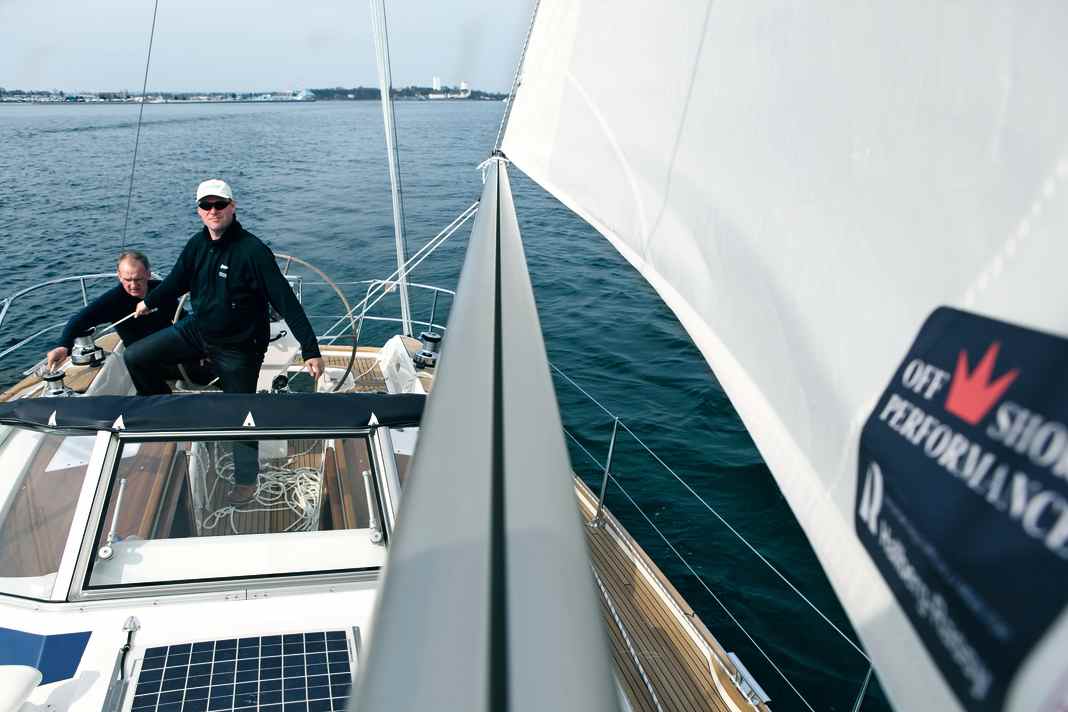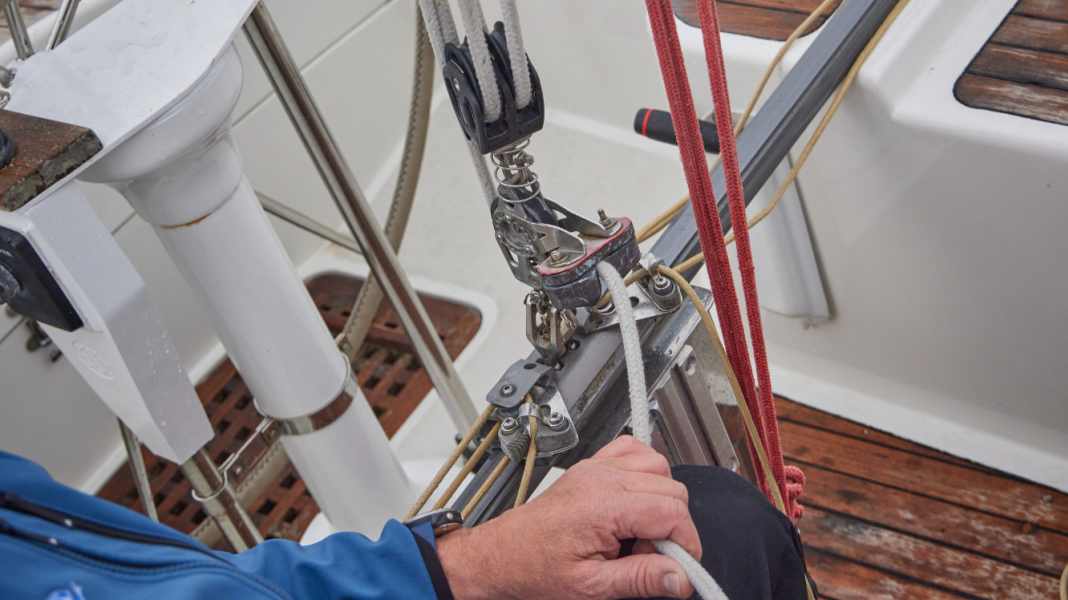
The perfect sail trim is sometimes called perfectionist gimmick by regatta sailors. However, the correct sail setting not only provides speed, but also comfort. This is because if the sails generate too much pressure, a strong heel is created - not a desirable condition for sailors. Heeling also increases the yaw to windward. The consequences are more rudder pressure and a Overall unsteady driving condition. The right trim is therefore by no means only of interest to ambitious regatta sailors.
The parts in this sail trim special:
- Trim the mainsail correctly
- Trim the genoa correctly
- Trim the gennaker correctly
- Trimming tips from professional Tim Kröger: Sail settings
A correct basic rig trim is necessary for the success of all trimming efforts when sailing. It is never too late for this - it can and should be readjusted at any time during the season as soon as it seems necessary. Correct basic trim is therefore all the more important for sailors who tend to be lazy on the water.
Firstly, we focus on the trim of the mainsail.
Mainsheet
Your voltage is the most important trimming device on board
The most important indicator of sheet tension is the leech of the sail. Small Wind ribbonThe sail is equipped with a batten pocket, preferably attached to the ends of the batten pockets, which provide precise information about the sail's inflow at different heights. Even if the threads often break off, especially on furling mainsails, they should be reattached as quickly as possible.
That's how it should be: The wind lines on the leech should blow straight aft, only the uppermost line may occasionally fold away to leeward.
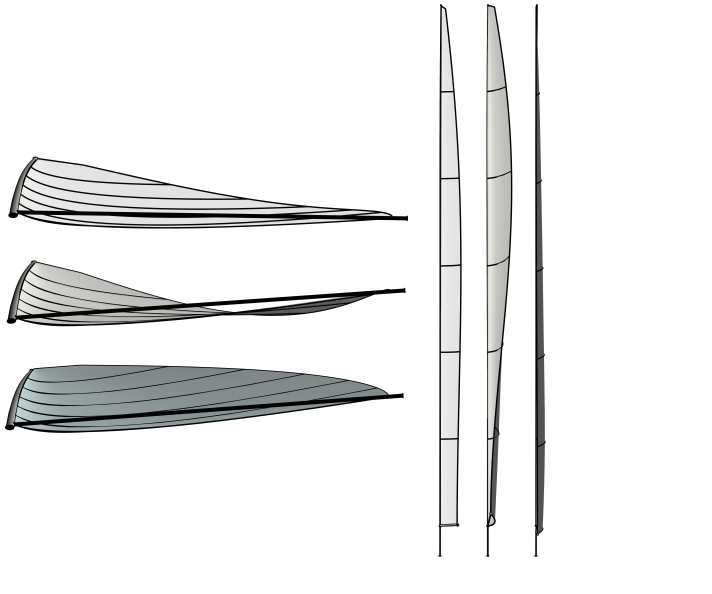
If the lower strings also fold to leeward, the sheet is too tight and can be slowly feathered to the desired result. However, the main boom should rise slightly in order to open the leech slightly. The downhaul must therefore not be too tight.
In gusty winds, make sure that the sheet can be released quickly at any time - either to take pressure off the leech or to reduce the angle of attack. The reduces heeling in the gust and the danger of getting out of hand.
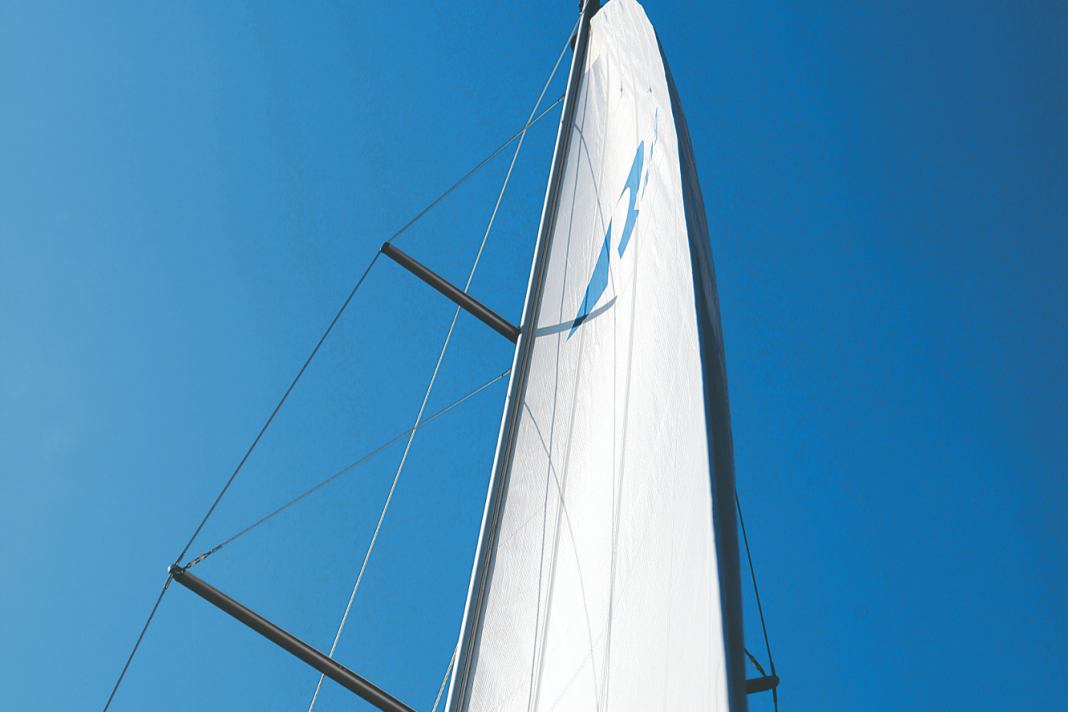


Großfall/Cunningham
The position of the maximum profile depth can be influenced by the luff tension. This can be adjusted at the top and bottom
As the wind increases, the largest profile depth of the mainsail, the belly, shifts aft and increases, recognisable by horizontal folds in the luff. The sail becomes less effective. This is counteracted by a more pronounced furling of the mainsail.
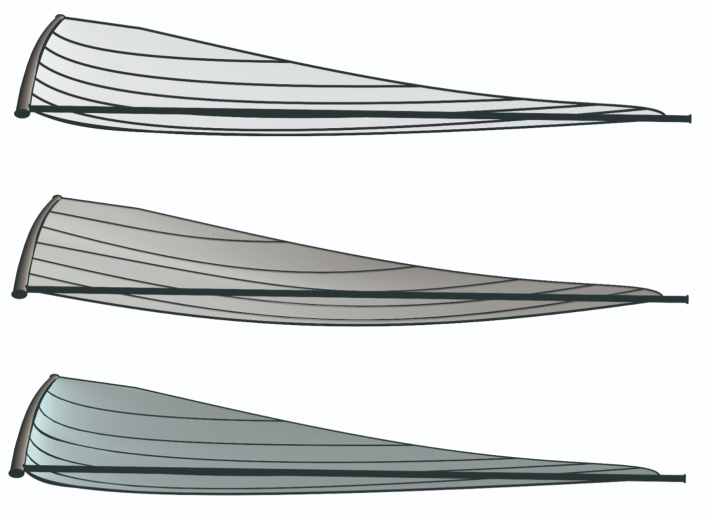
However, depending on the friction in the keep, traction is lost, so that often hardly anything happens in the lower half of the sail. This is where the use of a cunningham helps. The eye required for this is usually already present in the sail about 30 centimetres above the main boom, and only a stretcher needs to be sheared in. This allows the luff to be pushed through so that the belly shifts forwards again. In furling sails, the cunningham is missing due to the design, but they are flatter in the centre section.



Backstay
Its draft influences the mast bend and thus has a strong influence on the profile of the mainsail
In addition to the mast bend, the backstay tension also influences the sag of the forestay, see headsail trim. For the mainsail, more mast bend means a significant change in profile. How much a mast can be bent depends on the type of rig and its setting. If swept spreaders are used, more bending is usually possible in the centre area, as the mast is also compressed when bent and the upper shrouds become a little loose. For rigs with neutral spreaders, the attachment point of the spreaders forms the pivot point. They bend more in the area above.
Modern fractional rigs, where the forestay is lower than the backstay, can be bent much better than older, top-rigged masts. This is partly due to the lack of leverage when both the backstay and forestay are at the same height, and partly due to the material. Older masts are often much stronger than modern ones and, due to a different sailing philosophy, are not designed and rigged for strong bending.
A boom at the masthead can help to increase the bending effect of the backstay.
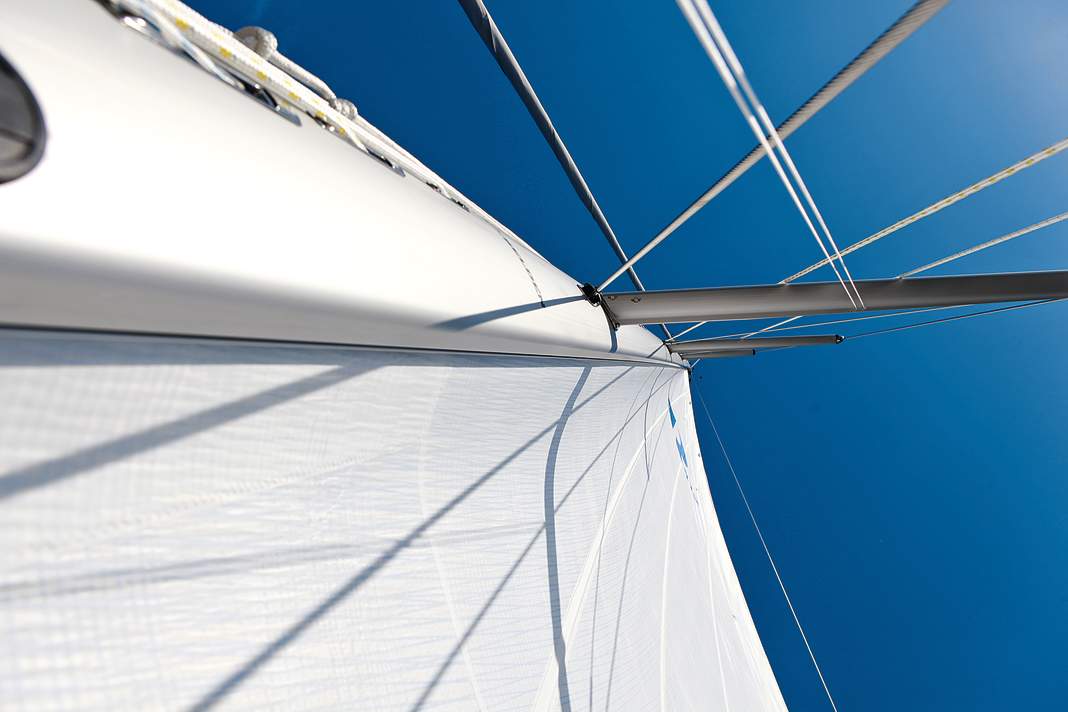




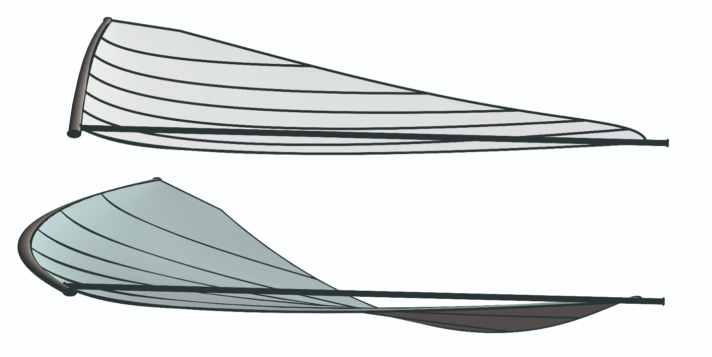
Downhaul
The sheet can no longer control the leech and downwind. The kicker takes over.
The further the mainsheet is furled, the lower the proportion of its vertical pulling force. From half the wind at the latest, depending on the length of the traveller, it only controls the angle of attack to the wind. It is no longer possible to control the pull on the leech and therefore the sail profile. This is taken over by the downhaul, also known as the kicker. Without it, the boom would rise sharply and the profile would twist so much that the sail would hardly have any effect. The entire upper third then often turns up so far that it kills in the wind and no longer generates any propulsion. The sail then has to be taken tighter overall, which shifts the sail's centre of pressure aft and additionally increases the already strong upwind tendency, usually on half-wind courses.
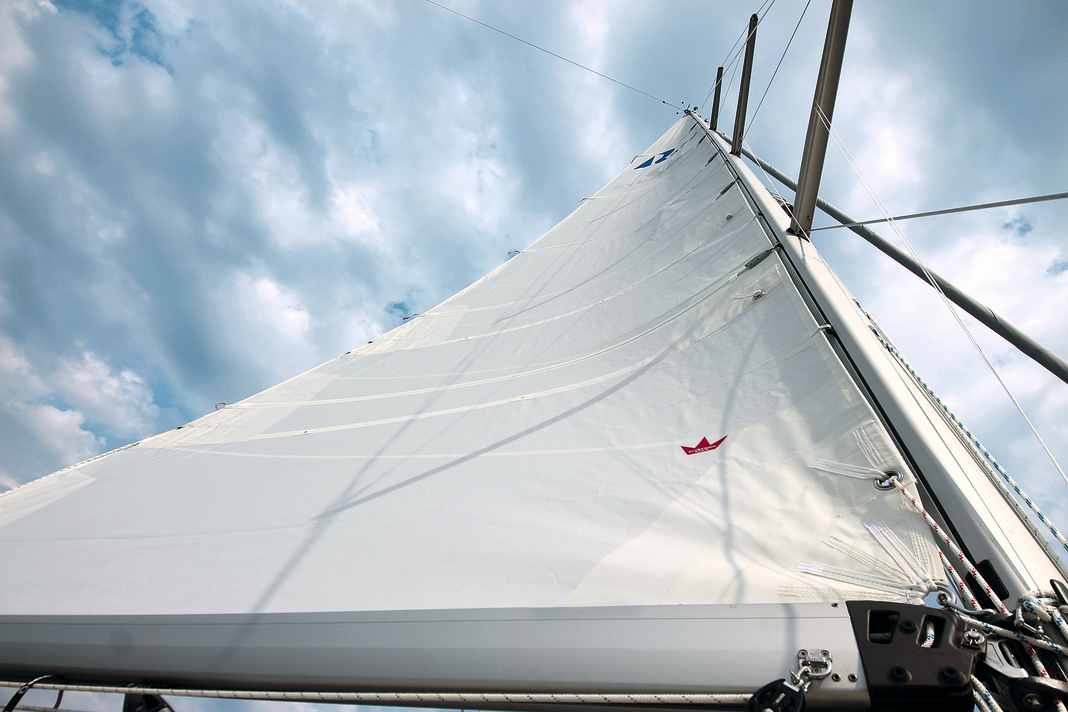



As the point of application of the downhaul on the boom is far forward, its leverage is quite low. It must transmit large forces and be sufficiently dimensioned, as must the boom itself, to prevent breakage. The stronger the wind blows, the tighter the downhaul should be. Wind tethers help with the adjustment (see mainsheet).
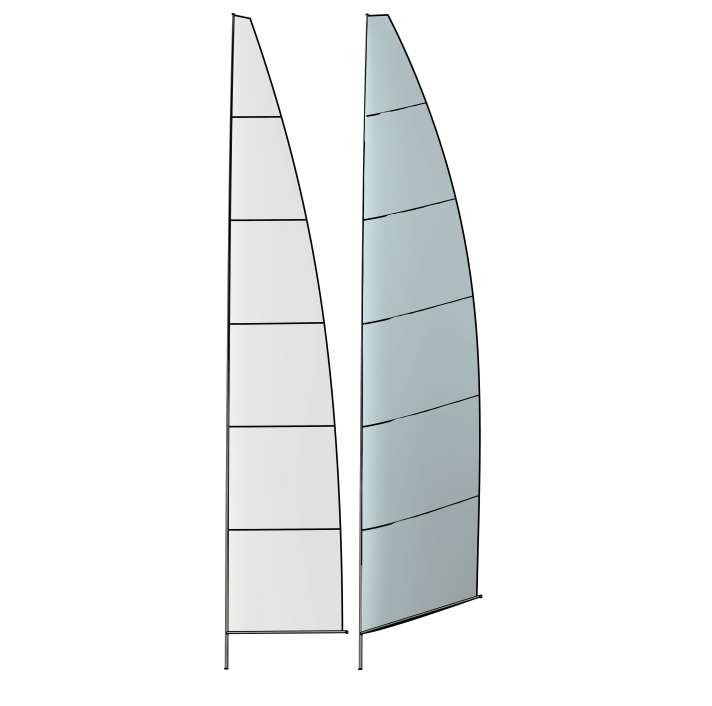
Traveller
An important aid on the wind in combination with the mainsheet
In light winds, the traveller is pulled slightly to windward and allows the main boom to be hauled tight with the sheet to midships without closing the leech too much. This is because the closer the boom comes, the stronger the vertical pull and the smaller the change in the angle of attack. As the wind increases, the mainsail leech should be closed again and the angle of attack increased at the same time, which the traveller makes possible by furling. If there is no traveller, the downhaul can also be used, but it is less effective due to the bend in the boom. A wide traveller in the cockpit enables fast inflation, especially in gusty winds.
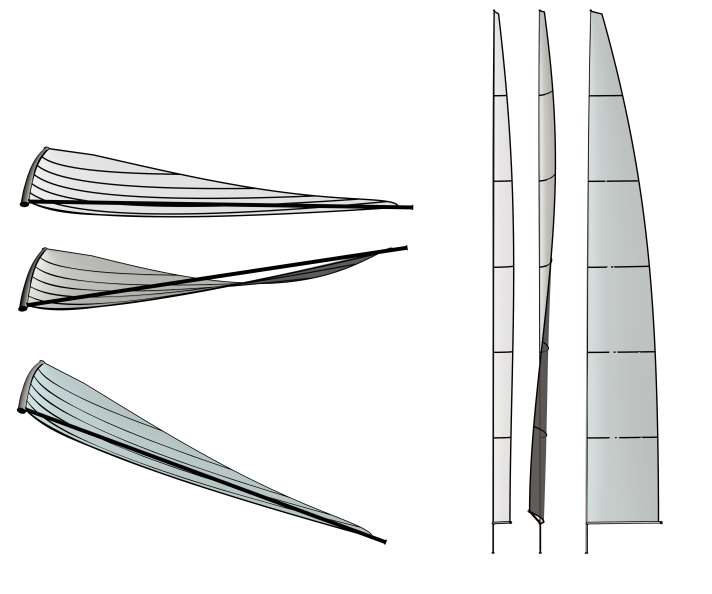

Outhaul
The stretcher on the clew has a great influence on the profile depth in the lower half of the mainsail
With the exception of very light winds, the foot of standard mainsails can be run so close to the main boom when sailing upwind. Most sails are cut in such a way that they then reach their optimum shape. However, this rule does not apply to furling mainsails. They have less cloth in the lower leech because otherwise a bulge would form in the mast when furling and jam the spindle. They should be adjusted as shown on the right. The appearance is deceptive: the profile above has the same shape as a standard sail.
The following applies to both variants: as the wind increases, the foot should be tightened more and more.
